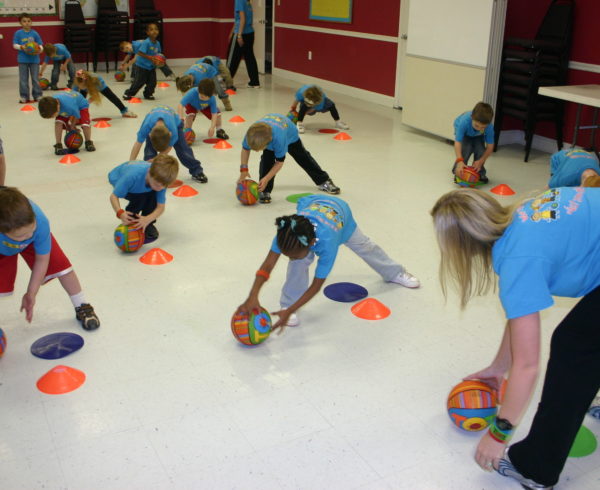Your young athlete is stressed out.
Maybe it’s not obvious. Or, maybe he or she has been self-motivated to take on more and more activities, giving the impression that one can juggle all of them well. However, no matter how collected a young athlete may be on the outside, the disposition may not match the degree of emotional turmoil inside.
It’s easy to assume overinvolvement sparks most of a current-day athlete’s stress. Kids are more overscheduled and have higher academic expectations with which to contend, causing some to suffer from burnout and quit sports completely.
However, State of Play 2016, the Aspen Institute’s Project Play report that identifies trends in youth sports participation, attributed several accompanying negatives of youth sports to single-sport specialization. When young kids begin to focus on and dedicate every ounce of effort to just one sport, the risk of injury, total sports burnout and declining athletic development increases.
More Is…More?
The findings leave parents and coaches to question whether there is truly an alternative method to the madness. The Aspen Institute reports being involved in multiple sports, which include differing strategies and rules and different ways to work various muscle groups by movement types, benefits young athletes the most.
Keeping one’s body moving can lead to an improved performance in games and practices, a lower likelihood of growing tired of sports and a higher chance that the athlete will develop a lifelong enjoyment in sports.
While multi-sport players have the physical advantage over their single-sport or sedentary counterparts, they may also, in turn, be emotionally distressed from the pressures of fitting in, making the grades and playing their best during the game.
Preventing Burnout and Overscheduling
As we develop a greater understanding about the health benefits of physical fitness, we’re now at a crossroads in regards to staying as physical as possible (like our bodies were built to do) and balancing modern life. With greater youth sports involvement comes the paradoxical force of a more challenging schedule to navigate without parents and kids losing their minds.
It’s all about the art of recognizing when your youngster is stressed out and taking steps to adjust. Take a look at your kid’s weekly schedule. Is everything filled up or are there several spaces where he or she can just enjoy running around outside? Perhaps his grades have started slipping or she’s acting a little differently. If your child eats more meals riding in the car to an event than at home, perhaps it’s time to examine how to make every day life a little less intense for everyone.
Participating in sports plays a huge positive role in child development; however, a rushed and overscheduled lifestyle, which lacks balance, can lead to burnout, resulting in a child who isn’t interested to participate in any sports.
Realizing the Reason for Packed Agendas
Other than trying to keep up with the Joneses, how did we ever go from a calm, structured atmosphere to a stressed soccer-fast-food-homework debacle?
Some parents are already thinking about college, keeping tabs on their children to make sure they’re involved in an array of activities. Other parents want their kids to do activities they never received the chance to do, even if the children aren’t interested. The possible reasons are endless; the important part lies in being able to recognize the reason your family’s stress level is over the top.
One way to move toward a more peaceful schedule is remembering to only add events that fit your family’s lifestyle to the calendar. It’s an excellent way to sort out priorities, like sitting down at the table together for dinner, and to nix occasions you could go without, like attending a community event that’s frequently held.
How to Simplify without Cutting Back
Finding greater balance in youth sports schedules doesn’t always have to mean eliminating activities. It’s amazing how your stress decreases when you do the obvious processes correctly. Simply changing when you prepare for the next day can make a significant difference. Try getting practice uniforms, backpacks and lunches ready in the evening so that the morning is grab-and-go time rather than a fit of haste.
Get rid of the clutter around high-traffic areas in your home, like the kitchen or utility room. As you practice time management, make sure your children are learning how to practice it as well. Procrastination is tempting, but student-athletes live a little differently. Be sure to plan ahead for large school projects and get them knocked out ahead of time.
One of the most important elements is to make time for family meals and social occasions for your child to hang out with friends. Sometimes we think it’s okay to go without social time. However, when we remove chances for us to be in community with one another, relax and simply be human, it takes a toll.
Pencil in Teams of Tomorrow to Help Your Child Develop Physical and Mental Strength
Looking for an activity for your multi-sport athlete? Teams of Tomorrow teaches basketball fundamentals, academic skills and agilities to jumpstart your child’s athletic readiness.
TOT can be integrated into your child’s day at school or daycare, making physical fitness part of the learning experience and leaving time for free play in the evening. Enroll your child today to start experiencing the benefits of TOT!








